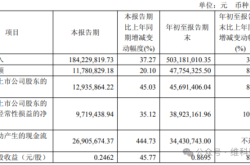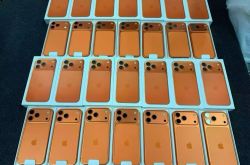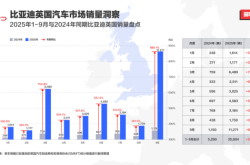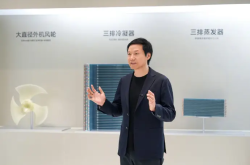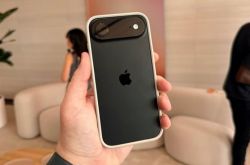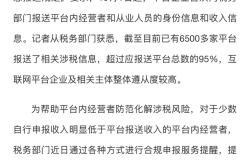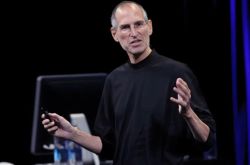Revolutionizing Robotics: NVIDIA's Isaac GR00T N1 Open-Source General Model
![]() 03/24 2025
03/24 2025
![]() 654
654
Produced by ZhiNeng Tech
At the GTC conference, NVIDIA unveiled Isaac GR00T N1, the world's first open-source general model for humanoid robots. This groundbreaking release marks the dawn of the general robot era and showcases NVIDIA's ambitious aspirations in the realm of embodied intelligence.
GR00T N1 boasts an innovative dual-system architecture that seamlessly integrates rapid response and complex reasoning capabilities. Leveraging synthetic data and the Newton physics engine, it accelerates development, significantly lowering the barrier to entry for robot R&D.
At the conference, Huang Renxun collaborated with Disney to demonstrate the robot "Blue," vividly illustrating the vast potential of humanoid robots in future applications.
The launch of GR00T N1 signifies not just a technological leap but a transformative shift in the robotics industry ecosystem. Positioned to become the "Android" of humanoid robots, it promises to propel technology adoption in manufacturing, household services, and beyond, redefining social production and lifestyle. Through its comprehensive approach encompassing computing power, software, and platforms, NVIDIA is steering the transition from general robot concept to tangible reality.
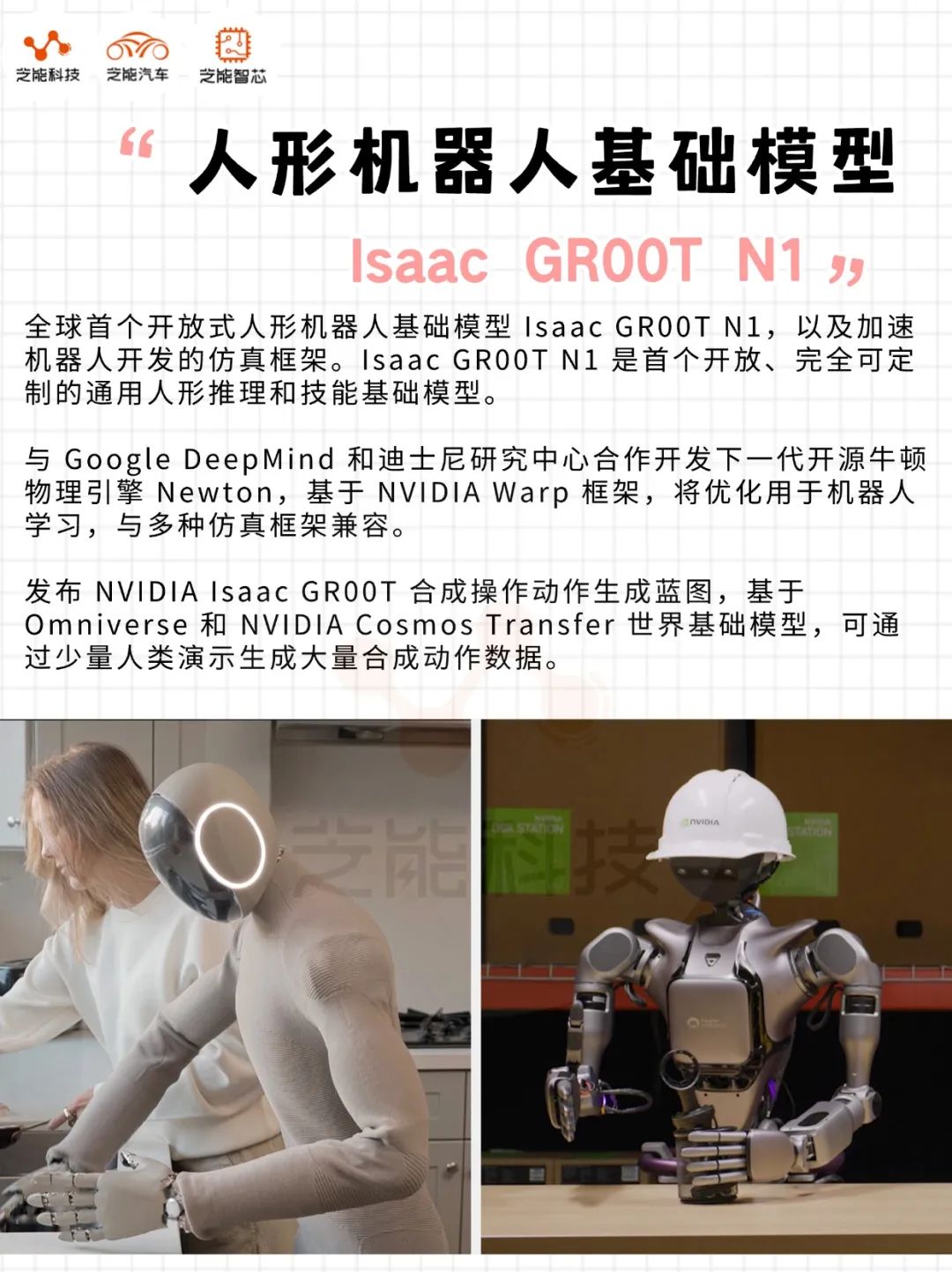
01
GR00T N1: Technological Innovation and Breakthrough
GR00T N1's core technology lies in its dual-system architecture, inspired by human cognitive processes. By combining rapid response with slow reasoning, it endows robots with unprecedented versatility and intelligence.
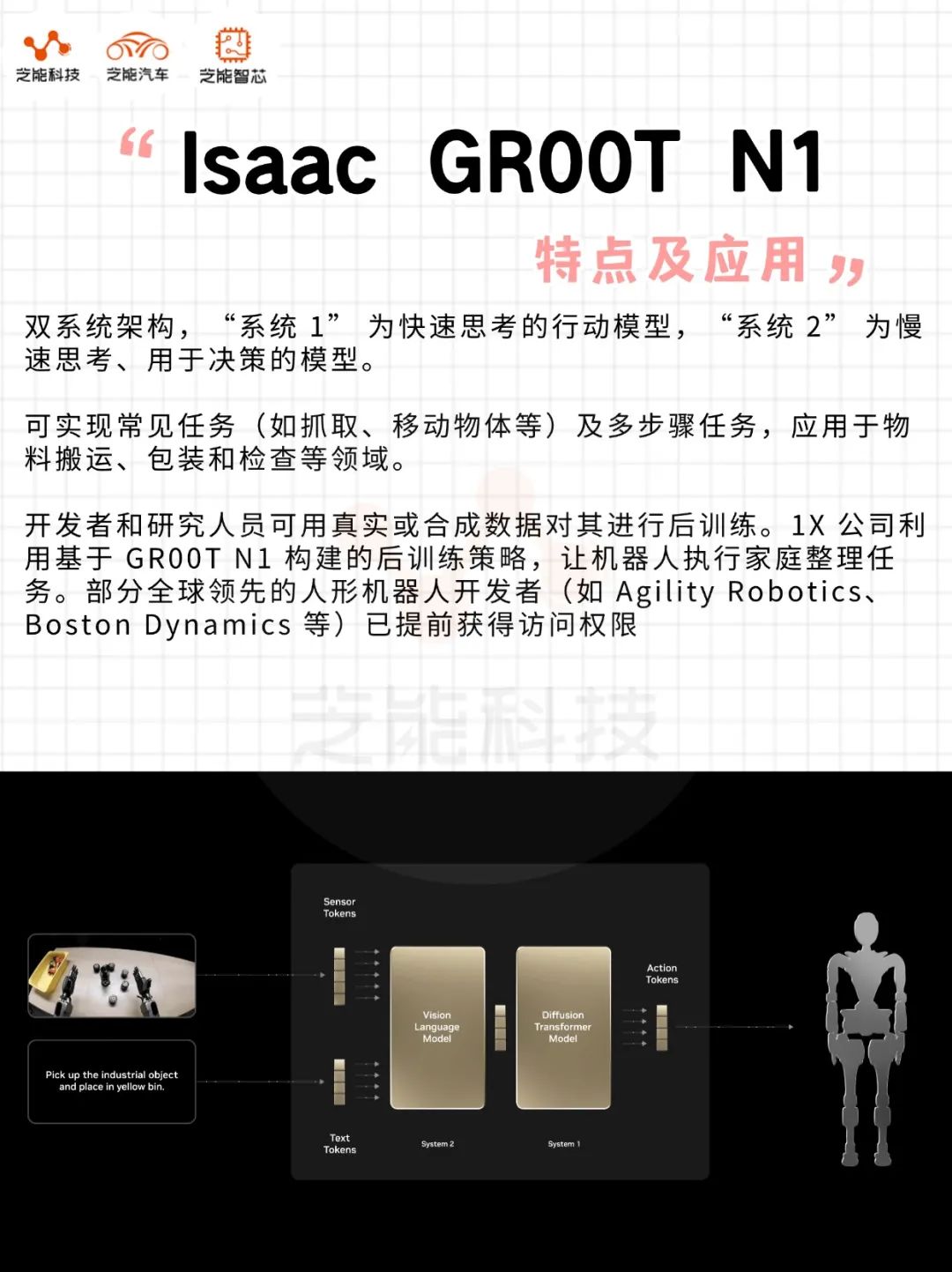
● Specifically:
◎ System 1: Rapid Response Action Model. Mimicking human "reflexes and intuition," this system swiftly processes immediate tasks. Trained on human demonstrations and synthetic data generated by NVIDIA's Omniverse platform, it enables robots to learn and execute commands instantly. For instance, when grasping objects, GR00T N1 autonomously adjusts its force, eliminating the need for additional programming.
This capability is crucial in industrial scenarios (like emergency obstacle avoidance) and household services (such as immediate command response).
◎ System 2: Slow Thinking Model. Driven by a vision-language model, this system handles "rational thinking," reasoning, and action planning based on the environment and instructions. Its outputs are translated into precise robot movements by System 1, supporting complex tasks. For example, in a warehouse, System 2 plans autonomous navigation paths and multi-step cargo sorting.
This reasoning capability propels GR00T N1 beyond traditional robots, moving closer to the goal of versatility.
The collaborative design of the dual-system architecture ensures GR00T N1 maintains efficient response while handling complex tasks. This breakthrough lays the groundwork for the realization of general robots, as versatility requires robots to adaptively perform diverse tasks in various environments. Compared to traditional single-function robots, GR00T N1's dual-system design represents a quantum leap in robot intelligence.
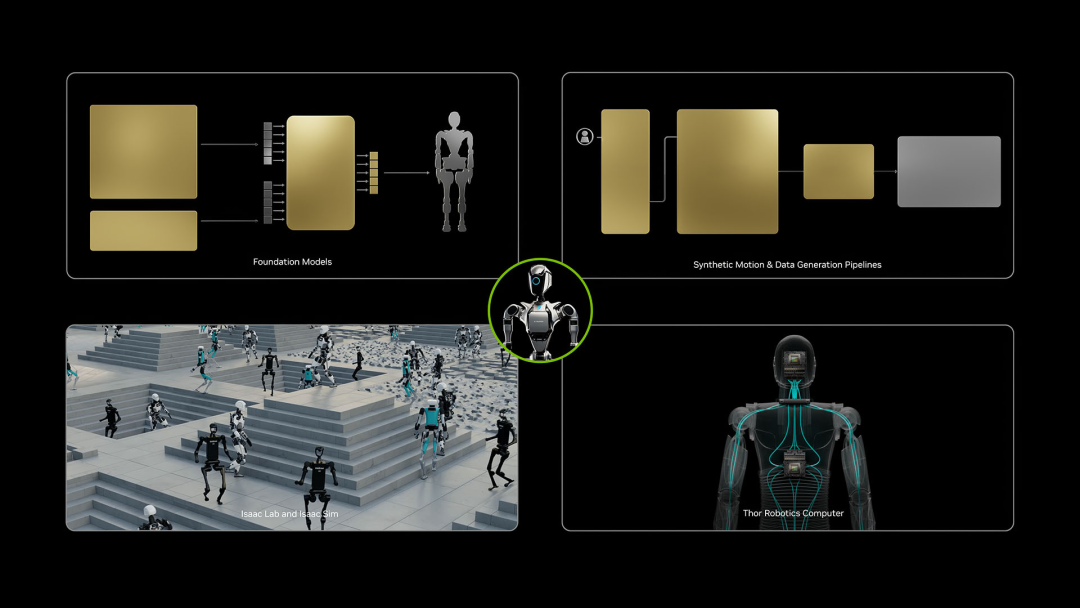
● GR00T N1's technological advantages extend beyond its architectural design, benefitting from NVIDIA's robust ecosystem support:
◎ Synthetic Data and Omniverse Platform: NVIDIA leverages Omniverse to create vast virtual training scenarios (e.g., simulated factory assembly lines, household environments), fine-tuned with real data. This enables GR00T N1 to swiftly adapt to new tasks and environments, reducing data collection costs and enhancing model generalization.
For instance, developers can train robots without collecting thousands of hours of real-world grasping data, relying instead on virtual environment simulations.
◎ Isaac Lab and Jetson Thor Chip: The Isaac Lab virtual training environment, Isaac Manipulator robotic arm control model, and Jetson Thor chip, tailored for robots, cover the entire spectrum of needs from perception to computing power.
Developers can access open-source models via the Hugging Face platform, customizing robot behavior with their own data. This streamlined approach shortens the robot development cycle from years to months, boosting technology implementation efficiency.
◎ Newton Physics Engine: Developed in collaboration with Google DeepMind and Disney, the Newton physics engine further enhances GR00T N1's learning abilities in complex environments. It simulates real-world physical interactions, enabling robots to master skills like grasping irregular objects or dynamic navigation in virtual settings, seamlessly transferable to the real world, augmenting practicality.
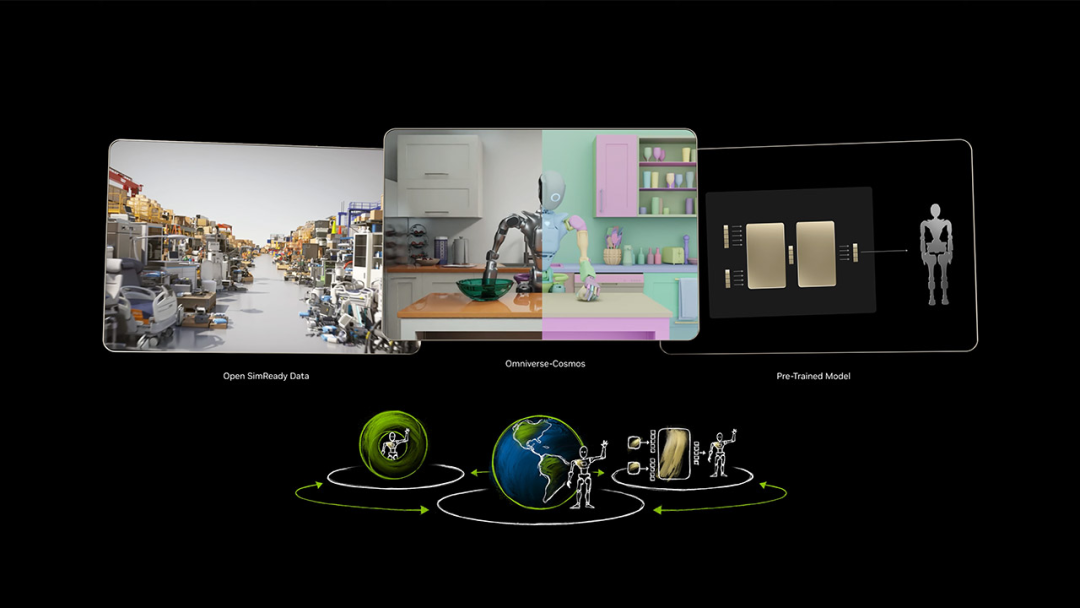
GR00T N1's open-source nature is another testament to its technological innovation. NVIDIA has released the model code, empowering developers to post-train and customize it as needed. Similar to ChatGPT's success in natural language processing, GR00T N1 could usher in a "ChatGPT moment" for robotics, enabling developers to create bespoke robots with minimal data, bypassing the need to build AI systems from scratch. This not only lowers the technical barrier but also accelerates the diversification of robot applications.
A logistics company can swiftly develop warehouse robots based on GR00T N1 without significant R&D investments. Technologically, GR00T N1's dual-system architecture, synthetic data support, and open-source model collectively form its core competitiveness, enhancing robot intelligence while providing developers with flexible, efficient tools, propelling humanoid robots from the lab to widespread application.
02
GR00T N1: Profound Impact on the Robotics Industry
GR00T N1's open-source attribute is the cornerstone of its influence on the robotics industry. By opening the model and offering customization support, NVIDIA has lowered the development threshold, attracting a diverse range of industry participants, including industrial robot giants (like ABB), humanoid robot companies (such as Figure, Tesla Optimus), and cross-industry players like Disney.
This open ecosystem, mirroring the success of the Android system in smartphones, positions GR00T N1 as the "Android" of the robotics industry.
Small and medium-sized enterprises and startups can access GR00T N1 at low costs to develop tailored robots, fostering technology penetration in manufacturing, logistics, healthcare, and other fields. A small factory can train robots based on GR00T N1 to complete specific assembly tasks, eliminating the need for expensive proprietary systems.
The open-source model fosters cross-industry collaboration. Disney, for instance, utilizes GR00T N1 to create highly interactive "Star Wars" robots, showcasing the immense potential for fun elements in the entertainment sector. This integration will broaden robot application scenarios and accelerate industry intelligence transformation.
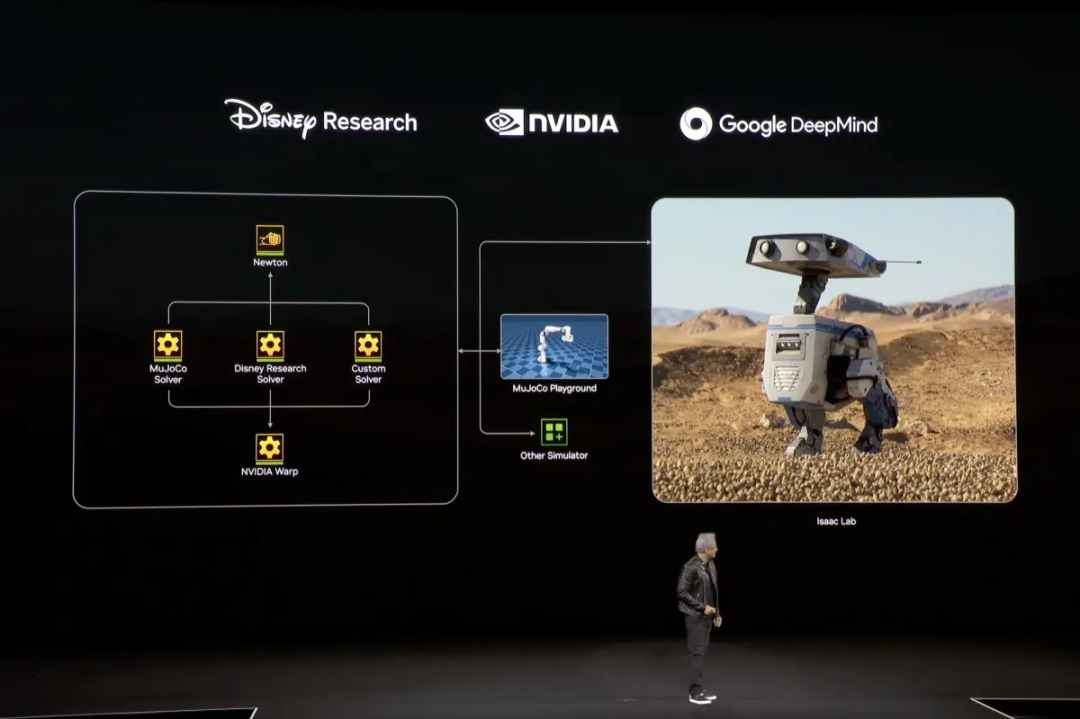
GR00T N1's versatility and learning abilities will initially catalyze profound changes in the manufacturing industry.
Imagine tens of thousands of GR00T N1-based robots synchronously learning through a "cloud brain" and sharing optimized operation plans. Once technical standards are unified, production lines will achieve greater efficiency and flexibility. For example, robots can swiftly adapt to new product requirements, reducing adjustment time and production costs.
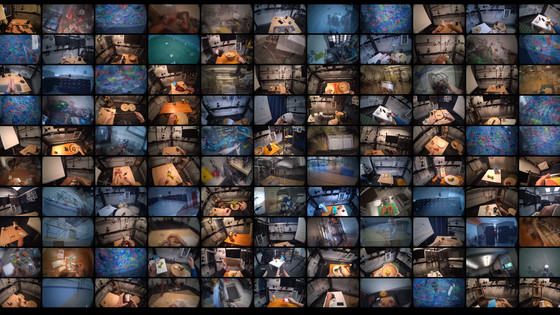
More significantly, as robot prices plummet to electric vehicle levels, household applications will become a reality.
NVIDIA predicts that household robots will become ubiquitous in the future, assisting with chores, nursing, and other tasks. For instance, GR00T N1-based robots can autonomously organize items or care for the elderly at home. This transition from industry to civilian use will reshape social division of labor and lifestyle.
GR00T N1's success is intertwined with robust computing power support. Training this model requires computing power a thousand times that of current GPUs, and the introduction of the Jetson Thor chip underscores NVIDIA's commitment to seizing the commanding heights of computing power.
The robotics industry's development is heavily reliant on computing power, and NVIDIA, with its comprehensive advantages in chips, software, and platforms, is poised to dominate. For example, if Tesla's Optimus adopts the GR00T N1 model, it may further rely on NVIDIA's computing power ecosystem, fostering deep industrial chain integrations.
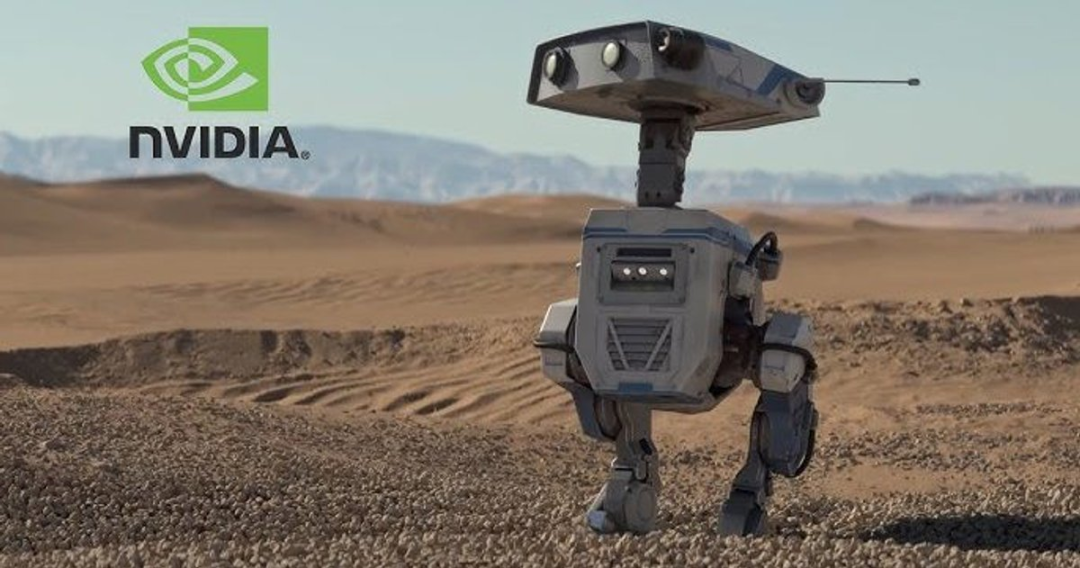
The release of GR00T N1 will trigger a chain reaction in the industry. Companies like Boston Dynamics and Agility Robotics may accelerate the launch of similar platforms to counter NVIDIA's first-mover advantage, presenting new opportunities for upstream and downstream enterprises in the industrial chain.
Developers of the Robot Operating System (ROS) can integrate with GR00T N1 to provide enhanced control capabilities, while component suppliers can optimize hardware for the Jetson Thor, driving rapid robot technology iteration and application scenario expansion.
From an industry perspective, GR00T N1 is not merely a technological product but an ecosystem. By lowering the threshold through open source, consolidating advantages through computing power, and expanding applications through collaboration, it will profoundly influence the future trajectory of the robotics industry.
Summary
NVIDIA's unveiling of Isaac GR00T N1 at the GTC 2025 conference heralds the advent of the general robot era, revealing its expansive layout in embodied intelligence. GR00T N1's open-source ecosystem and technological innovation will expedite the transition of humanoid robots from the lab to mass applications, potentially reshaping the labor market and social structure.
NVIDIA will continuously iterate the GR00T model, integrating the Newton physics engine and Jetson Thor chip, to construct a comprehensive robot ecosystem, leading the industry into the era of general robots.

